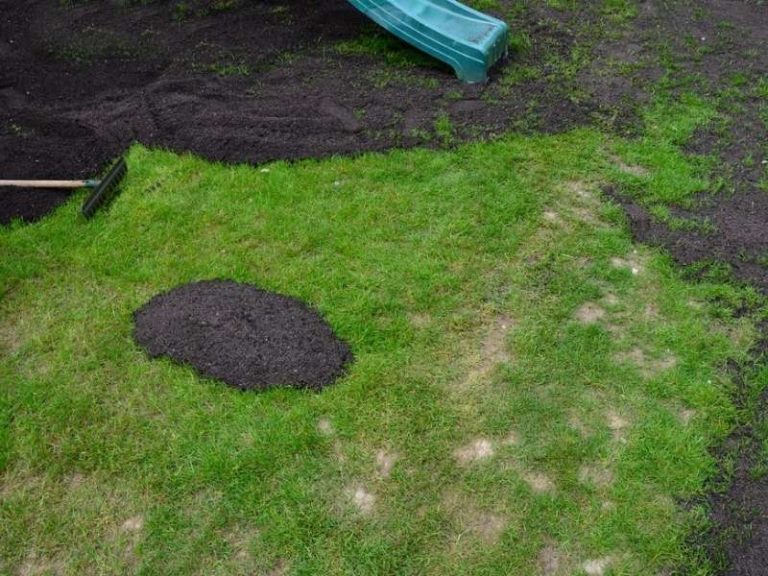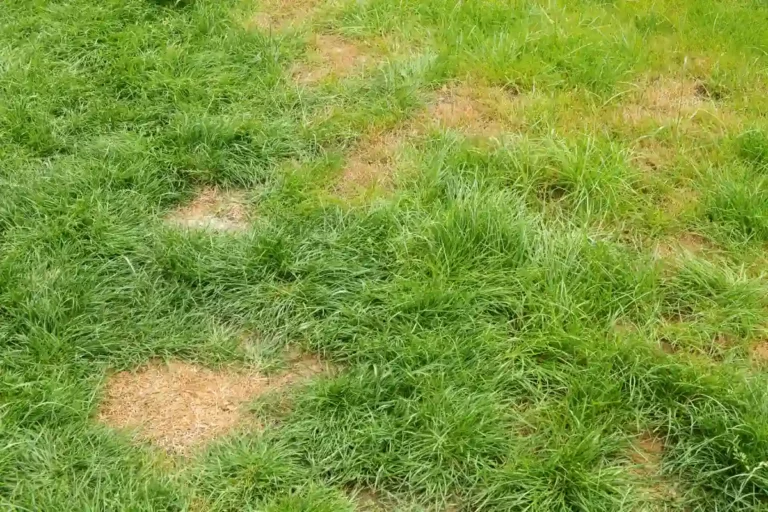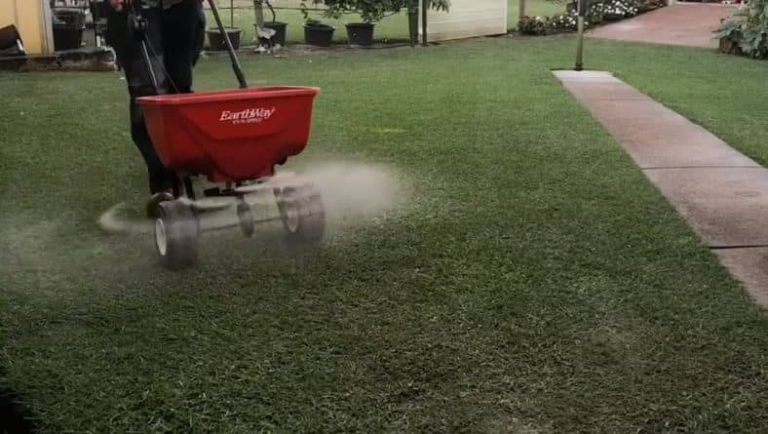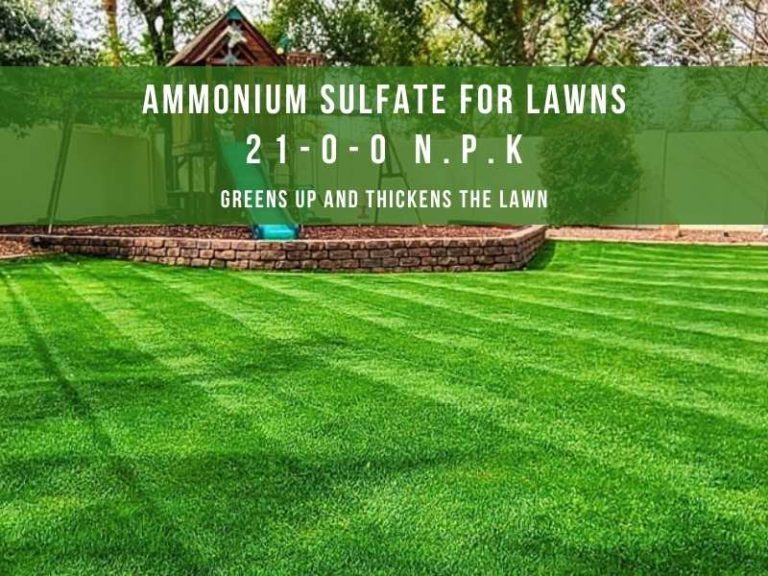How Tall Can Grass Grow? Maximum Height of Different Grasses
Grasses mature to different heights depending on the variety and where they are growing. If you mow too low, the grass can be scalped and injured, thus making the lawn susceptible to weeds and diseases. Meanwhile, leaving grass uncut for long creates an unsightly look and allows weeds to invade the lawn. But how tall can your turfgrass really grow?
Most types of grass grow as tall as 18 to 24 inches but some varieties such as tall fescue can grow as high as 48 inches while others like centipede remain short with a maximum height of 4 inches. To maintain a healthy lawn, always mow by cutting off only 1/3 of its height.
Average maximum height of grass
The average maximum height of grasses on lawns is six inches. It is best to keep the grass less than 6 inches tall by mowing, which helps control lawn weeds. Allow the grass to grow taller than 3 inches then mow by cutting off a third or less of its height.
Different turfgrasses have different maximum heights. You want to make sure you maintain an optimum height to keep your lawn healthy. Here are the varieties of turfgrasses and their respective maximum heights:
Kentucky bluegrass
Kentucky bluegrass matures to a maximum height of 18 to 24 inches tall when thriving in well-drained soils, full sun and enough of nitrogenous fertilizer.
Mow Kentucky grass to a height ranging from 1.0 -2.0 inches during cold conditions but between 1.5-3.0 inches in hot and dry climates. Be sure to mow once weekly or twice when the grass is actively growing.
This cool-season perennial grass has a high tolerance for cold and wear but moderately tolerates heat and drought and recovers quickly when the conditions become less severe.
Bermudagrass
Bermudagrass is a warm-season grass with coarse-textured leaves and visible stolons. It grows tall between 15 and 24 inches and has deep fibrous roots. Bermudagrass thrives well in fertile soils, full sun, and high temperatures to produce dense turf of light to dark green color.
Bermuda grass spreads aggressively through stolons and seeds, thus can take over a lawn if it’s an unwanted species among existing turf. Bermuda leaves can be hairy or sparsely-haired and have a ligule with hairs on the collar region.
Mow Bermuda grass to a height of 1.0 to 2.0 inches when the grass is actively growing (usually during spring-summer) but 1.75 to 3.0 inches in dry climatic conditions.
Tall fescue
Tall fescue is a cool-season grass whose cultivar variety for lawn called Festuca arundinacea grows as tall as 36 to 48 inches when mature. It is a denser turfgrass with more delicate leaves and is adapted to survive in poorly-drained soils, shade, high salt concentrations, and minimal irrigation in the summer. Its blades are glossy on the lower side and have serrated margins.
Tall fescue grows faster in spring and fall to produce flowers. It also has short rhizomes though it spreads using erect tillering. It survives wear, and seeds mature in early summer.
Mow tall fescue to a height of 2.0 to 3.0 inches during cold or moist weather conditions and 2.5 to 3.5 inches during hot seasons like summer.
Fine fescue
Fine fescue has folded leaves with a smooth feeling on the lower surface and ridges on the upper surface and matures to a height of 8 to 12 inches. The grass has four varieties for lawns: red fescue, creeping fescue, hard fescue, and sheep fescue. Fine fescues are cold and shade tolerant and can be mixed with other turfgrasses.
However, they have a weak tolerance to heat, droughts, and constant mowing. The recommended mowing height for turf-type fine fescue is 3.0 to 3.5 inches.
St. Augustine grass
St. Augustine is a warm-season perennial grass that grows to 10 inches tall in the growing periods of summer, spring, and early fall if not mowed. It produces medium-dense turf of green to blue color. St. Augustine grass has broad coarse-textured leaves and hair fringes on the ligule.
Some varieties of St. Augustine grass such as Palmetto and Seville are shade tolerant and need only 4-6 hours of sun to thrive. The turfgrass grows best in moist soils with a pH of between 5.0 to 8.5. It also tolerates high summer temperatures, competes with weeds, and has few pest attacks.
When well maintained, St. Augustine grass produces a dense, lush, greener turf on high-maintenance lawns.
To maintain the ideal height of St. Augustine grass, mow it at a recommended height between 2.0 to 3.0-inches tall in the warm seasons and 1.25 to 2.0 inches in the cold seasons.
Centipede grass
Centipede grass is a coarse-textured warm-season perennial that matures to 4 inches tall. It is slow-growing and has a yellow-green appearance. Homeowners who want a low-maintenance lawn prefer using centipede grass because it requires less mowing, less fertilizer, and herbicides.
Centipede grass thrives in sandy, acidic soil, full sun but can tolerate moderate shade. However, centipede grass is susceptible to injury in heavy traffic. It spreads by stolons and has pointed alternating leaves.
Mow centipede grass to a height of 1.0- 2.0 inches in warm or moist climatic conditions and 1.25-2.0 inches in dry conditions to maintain its size.
Perennial ryegrass
Perennial ryegrass is a cool-season turfgrass with folded leaves and grows as tall as 12-24 inches. Perennial ryegrass is a bunch-type grass that’s best used for winter overseeding for color and quality on high-profile lawns or golf courses.
This grass variety has a flat leaf sheath, membranous ligule, and a non-hairy collar. To maintain its height, mow perennial ryegrass at a height of 1.0-2.5 inches but only when it grows to at least 2.25-3.75 inches tall.
Zoysiagrass
Zoysiagrass is a perennial warm-season with three species used for turf: Zoysia japonica, Zoysia matrella, and Zoysia tenuifolia. They mature to 12 inches tall have rolled leaves in the bud shoot. The leaves are fine or coarse-textured, and the ligule has a fringe of hairs.
Zoysiagrasses are adapted to thrive in all types of acidic or alkaline soils, drought, and salty conditions. They are slow-growing and are wear tolerant.
Zoysiagrass has different mowing heights depending on the season. Set the mower to 1.0 -1.5 inches during summer. In partial shade, set the mower to 2.0-2.5 inches. Raise mowing heights slightly higher as the weather cools in the fall.
The table below summarizes the maximum height of grasses discussed and other turfgrasses commonly used in lawns.
| Grass species | Maximum height (inches) |
| Kentucky bluegrass | 24 |
| Bermudagrass | 24 |
| Tall fescue | 48 |
| Fine fescue | 12 |
| St. Augustine | 10 |
| Centipede grass | 4 |
| Perennial ryegrass | 24 |
| Zoysiagrass | 12 |
What happens if you never cut grass on lawns?
If you leave your grass uncut for long, it will grow to different heights, with some blades thinner than others, creating an unmatching appearance. Some turfgrasses also grow to form clumps, making the lawn unsightly.
Grass will grow with non-uniform height, form clumps, become weedy, unhealthy, and unsafe for walking or kids playing on the lawn.
Mowing helps to cut weeds, and if you don’t mow, weeds will grow and cover the lawn area. Weeds compete with the turf for nutrients, thus, turf becomes unhealthy.
Tall grass growing on lawns is unsafe for walking; the blades are rough for feet and can make for hiding places for snakes and other pests. Kids or pets cannot freely play on long grasses. Some states have a maximum turf growing height and if you let the grass grow taller than required, you may be fined for that.
Benefits of letting grass grow long
While leaving your lawn uncut for a longer time makes your lawn unsightly and allows weeds to grow, allowing the grass to grow tall may have some benefits to it.
Here are the benefits of keeping your grass tall:
1. Long grass uses less water
Uncut grasses have long, wider leaf blades that provide shade by blocking sunlight from reaching the soil underneath. The ground below becomes cool and loses less water to the atmosphere. When the soil retains the most moisture, the grass will need little water supply for growth.
2. The grass makes more food
By letting your grass grow tall, you’re allowing it to retain all of its leaf blades, which means there’s a much bigger surface area for photosynthesis. The grass will make more food and grow healthier than when it is mowed and stressed out too frequently.
3. Provides habitat to pollinators
When you allow grasses to grow longer without mowing, other plants like dandelions, daisies, white clover, and wild violets grow on the lawn. These plants have nectar and sweet scent to attract agents of cross-pollination like bees. Bees feed on nectar and will make the plants their homes. Bees help in cross-pollinating other crops near the lawn.
4. The grassroots grow stronger and deeper
Frequent mowing weakens the roots of your turfgrass. They become shallow and constantly strain to break down the food reservoirs to provide food when leaves are short after mowing.
However, when the grass grows long without mowing, it conserves most of its foods, thus, its roots don’t strain. The roots grow stronger and extend deeper into the soil.
Does grass ever stop growing
Grass stops growing when temperatures are too low or extreme. Insufficient water and sunlight will also slow down the growth of any turfgrass.
Low soil temperatures below 40oF make grass cells inactive and go into dormancy, while soil temperatures exceeding 60oF stress cool-season grasses, making them to stop growing. Meanwhile, warm-season grasses become dormant when temperatures exceed 95oF.
Most grasses need between 1.0-1.5 inches of water weekly to grow steadily. If the water is less than that, they get stressed, show signs such as curling and brown spots, and if the conditions worsen, they will die and stop growing. Cool-season grasses go dormant in hot summers, while warm-season grasses in winter.
Grasses become dormant during short winter days with less sunlight because they cannot make food for the normal functioning of their cells and plant processes.
References
- University of Missouri: Proper Mowing Practises for Your Lawn.
- Richard L. Duble, Turfgrass Specialist, Texas Cooperative Extension: Kentucky Bluegrass.






